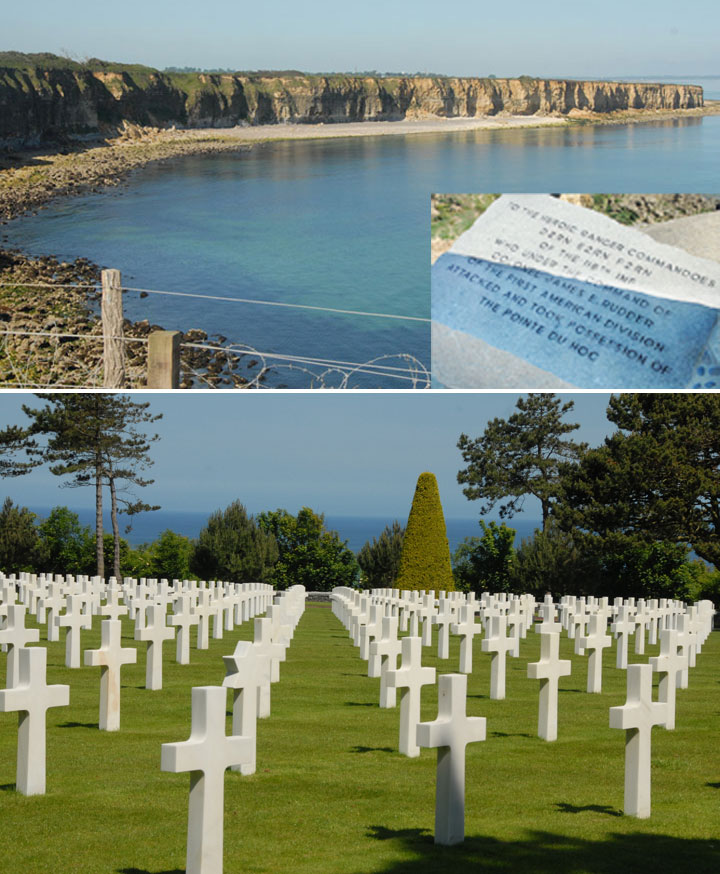
|
Pictured above (top photo) are the cliffs at Pointe Du Hoc that Army Ranger Commandoes had to scale on D-Day. Many Rangers lost their lives as did many American Soldiers on Omaha Beach and other landing sites. A memorial (inset) stands over the site of the D-Day Invasion saluting the brave soldiers that fought and died on June 6, 1944. Many of the soldiers that died that day lay in the American Cemetery just above Omaha Beach in Normandy, France. (Bottom photo) The Normandy American Cemetery and Memorial in France is located on the site of the temporary American St. Laurent Cemetery, established by the U.S. First Army on June 8, 1944 and the first American cemetery on European soil in World War II. The cemetery site, at the north end of its 1/2 mile access road, covers 172.5 acres and contains the graves of 9,387 of our military dead, most of whom lost their lives in the D-Day landings and ensuing operations. On the Walls of the Missing in a semicircular garden on the east side of the memorial are inscribed 1,557 names. Rosettes mark the names of those since recovered and identified. (Photos by Don Johnson) |
June 6, 1944: Allied troops began preparations to storm the beaches at Normandy, France
In the early morning of June 6, 1944, 67 years ago, Allied troops began final preparations to storm the beaches of Nazi-occupied France. By 0500 hours, the seemingly countless vessels that made up the vast naval armada that had escorted the 150,000 American, British, Canadian, French, and Polish troops were all positioned at their debarkation stations opposite the five Allied beach landing zones that would shortly be the focus of the day’s drama. As the sun rose, the conditions for a large-scale amphibious landing were far from optimal: the seas were choppy and there was a strong tidal current running close to the beach. Nonetheless, the decision had been made: Operation “Overlord,” the amphibious assault on Hitler’s “Fortress Europe” — after already having been delayed one day by bad weather — was at last going forward.
In the coastal waters off the 7,000 yard wide American landing sector, code-named “Omaha Beach,” the first of the carefully-picked assault teams clambered down into their waiting Higgins Boats; once loaded, the small landing craft circled waiting for the order to begin their final dash through the surf towards the obstacle-littered beach to the south. Omaha Beach was one of two landing zones assigned to the American forces. The other American sector, code-named “Utah Beach,” was farther to the west. Heavy naval bombardment of the German defensive strong-points had commenced at 0530 hours. At 0630 hours, 96 specially-equipped amphibious Sherman tanks, the Special Engineer Task Force, and eight companies of assault infantry — four each from the 1st and 29th Infantry Divisions — began their invasion run into their target beach: a narrow strip of dark sand that would, by the end of first day of the invasion, be rechristened with the dubious title: “Bloody Omaha.”


